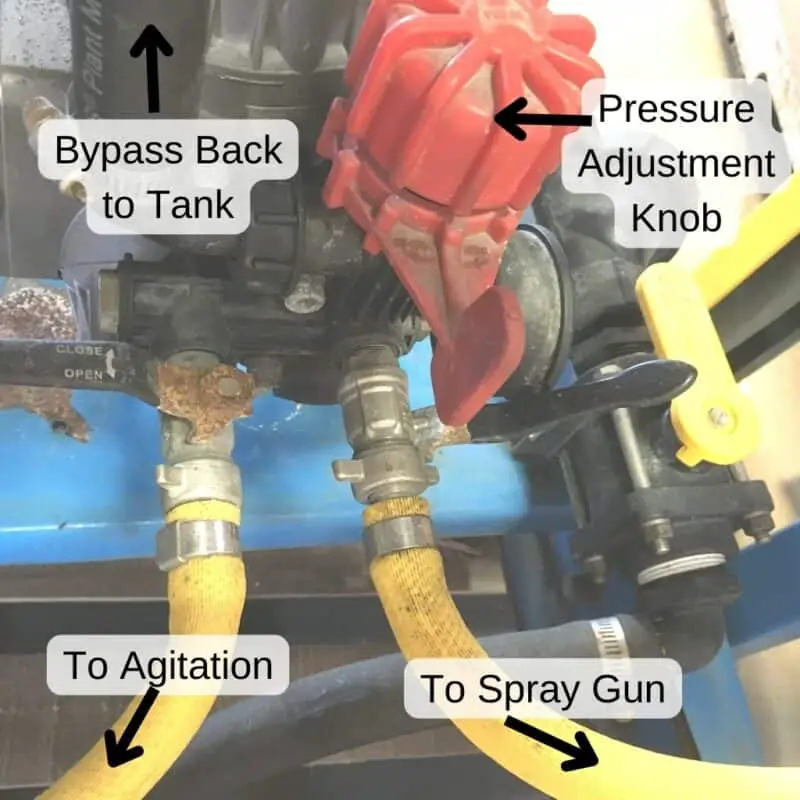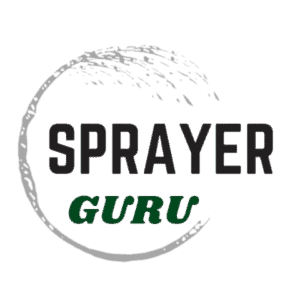No matter what you want to spray, lawns, fields, or trees, it is important to be able to control the output of your sprayer. Controlling your sprayer’s output ensures that you apply the correct amount of chemical in the most efficient manner. If you are new to spraying, you may be uncertain about how to do this.
In general, to change the output of your sprayer you need to adjust the flow created by the pump with a regulating valve or change the size of the nozzles on your sprayer. there are other factors that will affect your overall sprayer output and application rate. In this article, we will break down controlling sprayer output on several different types as well as how to manage your application rate.
What Determines Sprayer Output?
Sprayer output is the amount of liquid that comes out of the sprayer over a given period of time. It is a combination of flow from the pump as well as the capacity of the spray nozzles being used.
Spray nozzles are a huge topic on their own. I’ve written several articles about them here and here. But basically, they’re different sizes of nozzle and they, along with the maximum flow of your pump, determine the maximum output of your sprayer.
So changing the output of your sprayer requires you either change nozzles or change the flow. Changing the flow increases or decreases the operating pressure.
Sprayer output is not the same as your application rate or amount of liquid applied over a certain area. Usually gallons per acre or gallons per 1000 sq ft. These two things are related but calculating them is different. This article on sprayer calibration has calculators to help you determine both sprayer output (GPM) and application rate (GPA gallons per acre or gallons per thousand square foot).
If you keep your speed constant and increase your flow(pressure) your application rate increases. Likewise decreasing your flow rate decreases your application rate if your speed remains constant. Let’s look at some different sprayer types and how to adjust the flow rate so you can achieve your desired application rate.
Changing The Output of Your Sprayer
No matter the type of sprayer you have, your output can be adjusted. However, the means of doing so is different for different types of sprayers.
Changing Output of Hand and Backpack Sprayers
For most hand sprayers or backpack sprayers, if you want to change your output you must change the way you spray or change the size of your sprayer nozzle.
The output of a “user-powered” sprayer is directly related to the operating pressure. This is the same as other sprayer types, however, with backpack and hand pump sprayers the pressure is constantly changing. In order to maintain fairly steady pressure you must continue to work the handle, otherwise, pressure will gradually decrease as you spray.
So the simplest way to change your output is to pump less, however, this makes it hard to maintain a consistent flow and spray pattern. Changing the nozzle to a smaller size will allow you to keep keep the pressure up so your spray distance and pattern are consistent and you will still have less output. Less output means a lower overall application rate if you are moving along at the same pace.
If you want to dive deeper into backpack and hand sprayer output, or how they compare to one another, do check out these resources:
How Much Area Can a Backpack Sprayer Cover?
How Far Can a Hand Pump Sprayer Reach?
Changing Output of Spot Sprayers & Small Boom Sprayers
12-volt pumps are the workhorse when it comes to spot sprayers and small boom sprayers. These sprayers use a regulating valve to control the operating pressure of the system. Adjusting this valve will change your sprayer output.
The valve controls flow by diverting liquid from the discharge of your pump back to the tank. When you open the regulating valve more liquid will be “bypassed” and your sprayer output will be lower. When you close the regulating valve, your sprayer output increases.
The valve is usually paired with a pressure gauge. This provides you with a reference point for different levels of flow. You can calibrate your sprayer to determine the output of your sprayer at different pressures in order to know what pressure you should spray at when you drive at a certain speed.
If your sprayer is not a boom sprayer, but instead a spot sprayer with just a spray wand. The output is regulated the same way. However, your application rate will depend on how you spray. As with a backpack sprayer, you have control over where the liquid is directed and how long you are spraying a specific spot.

Changing Skid Sprayer Output
Skid sprayers are similar to a spot spray because again, the user controls where and how long an area or tree is sprayed with the spray gun. The output of these sprayers is also controlled with a regulating valve paired with a pressure gauge.

Adjusting the Output of Agricultural Boom Sprayers
Changing the output on a large agricultural sprayer can still be done with a regulating valve, but the methods used to control these valves are more complicated. These more complex controls allow the operator to monitor and control things from the cab of the sprayer or tractor.
The regulating valves used on these types of sprayers are electronic motor actuated. They work in conjunction with a flowmeter or pressure sensor. A rate control computer in the cab is used to automatically adjust the regulating valve. This results in the correct amount of flow or output from the sprayer to apply chemicals evenly across the entire field.
A lot of variables will affect the application rate of a sprayer, you can learn more about calculating how much volume you need to spray per minute to achieve your application rate, and how to calculate gallons per acre in this article on sprayer calibration formulas.
What if My Sprayer Has No Regulating Valve?
It is possible that your spot sprayer or lawn spray does not have a regulating valve on it. Low-flow 12-volt sprayer pumps don’t necessarily require one, however, it is a good idea to keep your pump from cycling. It is also necessary if you want to vary your output. If you want to add a regulating valve to your sprayer, be sure to read this article about sprayer regulating valves where I cover how to add one.

